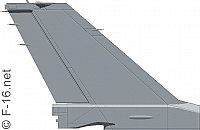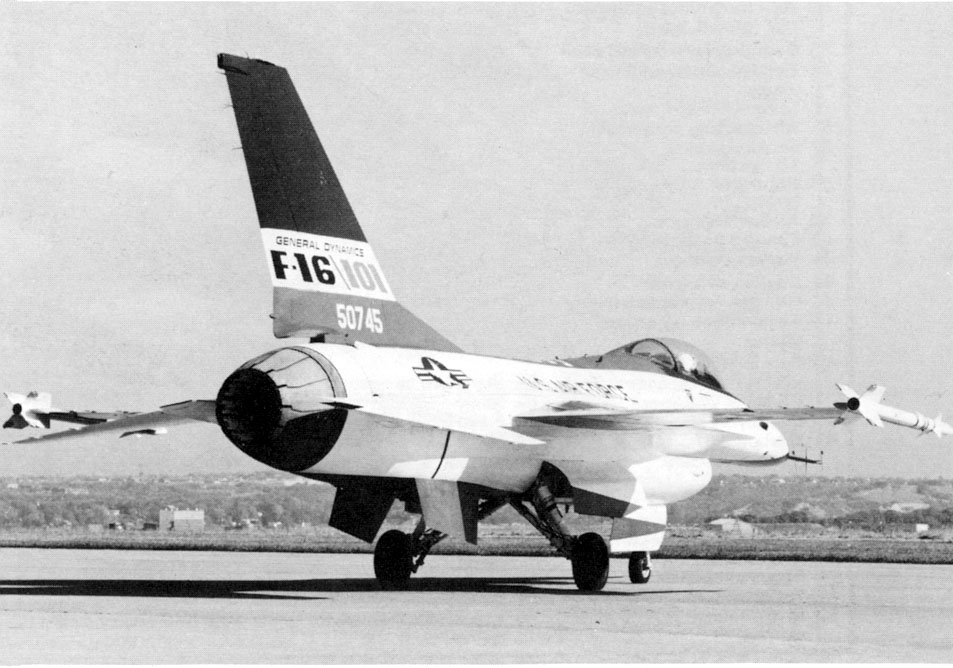 |
F-16/101Derivative Fighter Engine |
Derivative Fighter Engine Program
A set of four 30,750 lb.s.t. General Electric F101 turbofans were the powerplants of the Rockwell B-1A Lancer long-range strategic bomber. President Jimmy Carter had decided to cancel the B-1A in 1977 after the completion of only four examples.
In search of new customers for its F101 turbofan engine, the General Electric company reworked the engine for a fighter aircraft under the Derivative Fighter Engine (DFE) program, a joint USAF/Navy program to explore alternative powerplants to the Pratt & Whitney F100 turbofan in the F-16 and for the TF30 turbofan in the F-14 Tomcat. The new engine was designated F101X, and featured some components derived from the F404 engine used on the F/A-18 Hornet. These included a scaled-up fan and a modified nozzle and afterburner.
Ground Testing
The first engine reached full power on December 30, 1979, the first day of ground testing. During the following month it clocked up 60 hours of running at all power levels. By the autumn of 1980 the F-101 had completed 430 hours of accelerated mission testing - the equivalent of 1,000 hours of F-16 flying.
Since testing had begun, maximum thrust had fallen by less than two per cent, while specific fuel consumption in afterburning mode had increased by just over one per cent. The engine was stripped down for examination, found to be in a good condition, then rebuilt to undergo testing intended to simulate 1,000 hours of flying in the F-14.
F-16/101 Flight Testing

The first FSD F-16A (#75-0745) was fitted with the new F101X DFE engine and flew for the first time on December 19, 1980. The General Electric engine actually performed better than the F100, which was at that time still experiencing teething difficulties. However, the air intake had problems with a high-frequency oscillation at the engine inlet and an instance of a fuel leak occurred which had to be rectified with minor fixes.
The F-16/101 flight testing went smoothly, all trial objectives being accomplished by May 29 of the following year in 58 sorties and 75 flying hours - 25 hours less than planned. Twelve pilots flew the aircraft during a program of development trials which included close-support, strike and air-to-air missions. The only major incident which marred this fast-moving and successful test program was a single dead-stick landing in January 1981 due to a fuel leak.
In the event, the F101 engine was not adopted for the F-16, and the F-16 remained powered exclusively by the Pratt & Whitney F100 turbofan for another few years until the advent of the General Electric F110 turbofan, which was a development of the F101X DFE. The F-110 was later adopted as an alternative powerplant for the Fighting Falcon.
Specifications
Engine: One General Electric F101X DFE turbofan, rated at around 14,000 lb.s.t. dry and 28,000 lb.s.t. with afterburning.
Maximum speed: Mach 2.05 at 40,000 feet. Service ceiling 55,000 feet. Maximum range 2400 miles. Initial climb rate 62,000 feet per minute.
Dimensions: wingspan 32 feet 9 1/2 inches, length 47 feet, height 16 feet 8 1/2 inches, wing area 300 square feet.
Weights: 16,000 pounds empty, 37,000 pounds maximum takeoff.
Please use this form to add any list any error or omissions you find in the above text.
Note: your comments will be displayed immediately on this page. If you wish to send a private comment to the webmasters, please use the Contact Us link.
